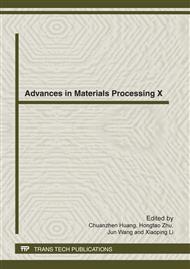p.556
p.563
p.569
p.574
p.580
p.586
p.591
p.596
p.603
Failure Analysis of a Bellows Expansion Joint of Inconel625 Alloy
Abstract:
A bellows expansion joint of a refinery cracked within a year of use. Analysis was carried out based on the investigation of the working conditions and environments. Through the macroscopic analysis, chemical components analysis, microstructure analysis and SEM analysis, we drew some conclusions. The high-temperature sulfur corrosion led to the failure directly, while the direct reason was the extra load applied on the joint which was caused by the unreasonable support structure. Preventive measures were proposed at last.
Info:
Periodical:
Pages:
580-585
Citation:
Online since:
April 2012
Authors:
Price:
Сopyright:
© 2012 Trans Tech Publications Ltd. All Rights Reserved
Share:
Citation:


